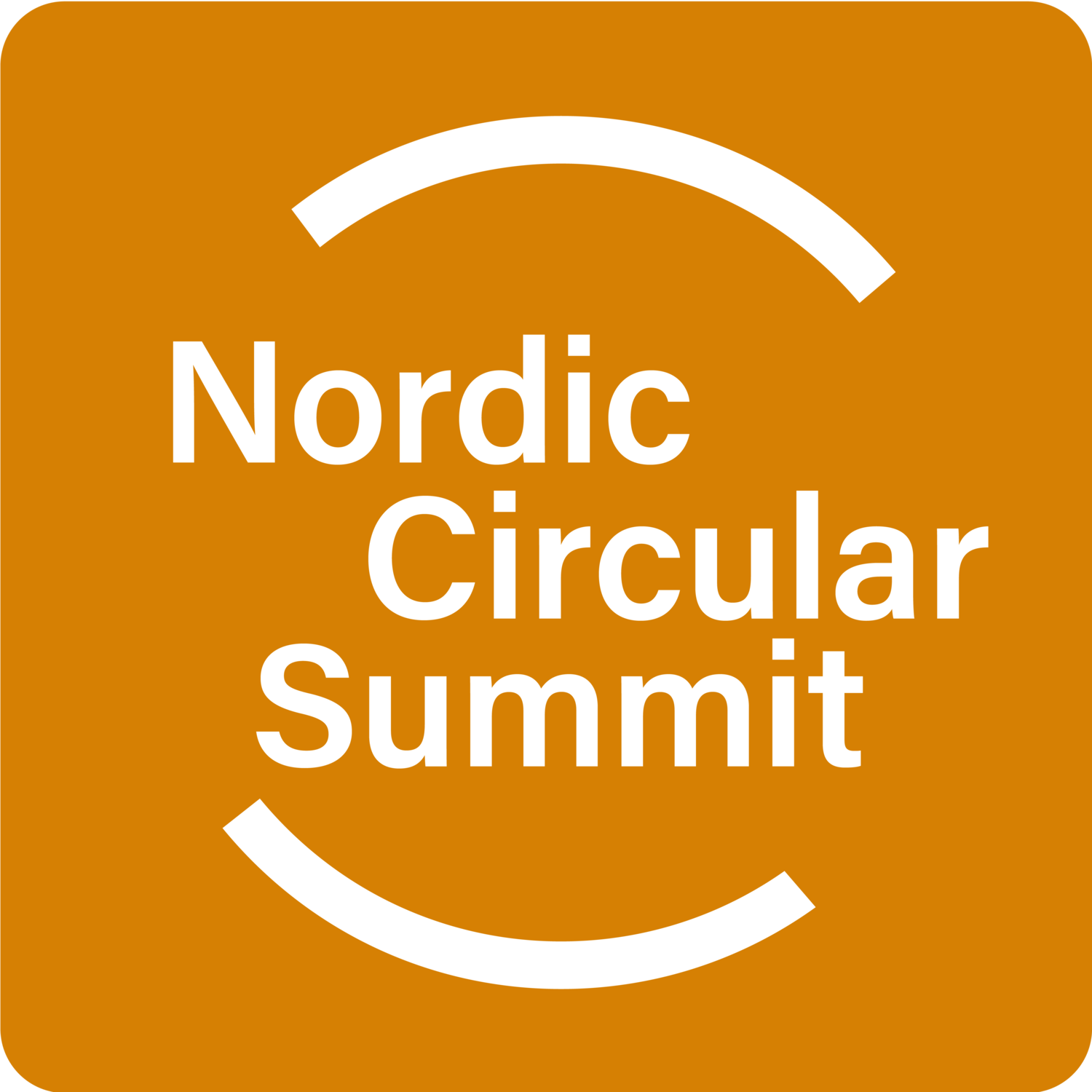In what way is communication important in the circular transition? With brands and companies getting more and more eager to communicate their circular solutions, how can consumers avoid greenwashing and be sure they are choosing the right products? How can companies build honest, effective messages that make consumers listen?
In this session, we are exploring the wave of sustainable communication, the growing position for circular solutions, and communication tools that will help the circular transition while building the brands of tomorrow.
Agenda
Welcome by the moderators
Isabella Holmgaard, Managing Partner, Nordic Circular Hotspot
Cathrine Barth, Managing Partner, Nordic Circular Hotspot
Introduction to the theme: quest for clarity—branding and communicating circularity
Isabella Holmgaard, Managing Partner, Nordic Circular Hotspot
Communicating circularity
Ross Findon, Chief Communications Officer, Teemill
Building a brand on circular principles
Ragna Sara Jónsdóttir, Founder and CEO, FÓLK Reykjavik
Communicating beyond the choir
Veronica Mike Solheim, Creative Director, Natural State
Ecolabel for a circular textile and product industry
Anne-Grethe Henriksen, Head of Marketing and Communication, Svane Nordic Ecolabel
EU Taxonomy and the end to greenwashing
Paal Frisvold, Executive Officer, Strategy and Communication, SINTEF
Next-generation communication
Justina Ramonaitytė, Board member and Communications Coordinator, ReGeneration 2030
Panel discussion
Moderator: Isabella Holmgaard, Managing Partner, Nordic Circular Hotspot
Closing remarks
Speakers in this session
Talks in this session
Communicating Circularity
Ross Findon, TEEMILL
Ross Findon is chief communications officer at Teemill, the world's largest dedicated supply chain and e-commerce platform. With more than 10,000 stores using it's open-source solutions, Teemill has been created to give anyone, anywhere, the tools to create a circular and sustainable clothing business. For five years he was at the Ellen MacArthur Foundation, where he was media and messaging lead, working across the Foundation's initiatives, including food, fashion, plastics, design and finance.
Building a brand on circular principles
Ragna Sara Jónsdóttir, FOLK ICELAND
Founded in 2017, Icelandic interior and lifestyle brand FOLK Reykjavik designs for the modern sustainable way of living. It is FOLKs firm believe that a transition from a linear to a circular economy is needed and works towards this change with the brand progressive Icelandic designers.
Being in the forefront already in 2017 — how did the brand experience being one of the first to produce and brand circular products? How did the market respond back then, and how important is this message for the brand today?
Communicating beyond the choir
Veronica Mike Solheim, Natural State
Veronica Mike is a creative strategist specialized in brand development and storytelling. She holds a BA in Art Direction and the previous Chief Editor of design magazine A New Type of Imprint (Best Design Media 2018). August 2020 she joined Natural State as brand strategist and creative director, where she has been working closely with the development of Nordic Circular Hotspot.
When Natural State took on the task as project managers for the Nordic Circular Hotspot, one of the focus areas was to make circular economy knowledge and information available and comprehensible to everyone — across industries, backgrounds and borders.
Learn how Veronica and her team created a brand and communication strategy for the NCH with a mission to “speak beyond the choir” in this session.
Ecolabel for circular textile and products
Anne-Grethe Henriksen, Svane Nordic Ecolabel
The Nordic Swan Ecolabel, the official ecolabel of the Nordic countries, has now launched new requirements for clothing and other textile products. The textile industry is a key industry for solving the problems of climate change, nature loss and the spreading of harmful chemicals. According to the EU, the textile industry is the fourth most damaging sector when it comes to climate and the environment. There is a great need to reduce the environmental impact and contribute to a more circular economy, where we recycle materials instead of using and disposing of them. The requirements for product design, increased emphasis on quality, longevity and a ban on dumping surplus clothing are some of the innovations.
Let’s learn more about this initiative and take a closer look at how effective these labels are for the publics engagement.
EU Taxonomy and the end of greenwashing
Paal Frisvold, SINTEF
The EU taxonomy is a classification system, establishing a list of environmentally sustainable economic activities. The EU taxonomy would provide companies, investors and policymakers with appropriate definitions for which economic activities can be considered environmentally sustainable. In this way, it should create security for investors, protect private investors from greenwashing, help companies to become more climate-friendly, mitigate market fragmentation and help shift investments where they are most needed.
Paal Frisvold has worked for a number of years with the EU's climate, environment and energy policy in Brussels, e.g. for the Environmental Foundation Bellona and Norsk Industri. In 2021, he was appointed by the European Commission as an ambassador for the EU's climate pact. Today he works as a consultant for the research institute SINTEF with a focus on the EU's research policy. In 2014, he published the book "Mot Europa - The story of a hesitant Norway.” Paal is often frequent speaker on EU cooperation and Norway's relationship with the EU.
Frisvold will give us a thorough update on the EU Taxonomy and what it means for our fight against greenwashing.









